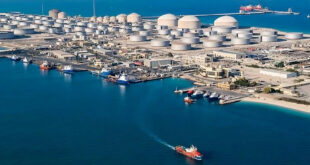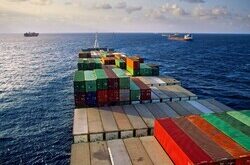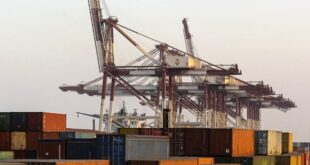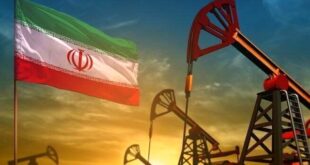Iran is expecting significant surge in its aluminum production, as national prospective plans are directing towards an increase by more than 60 percent in the upcoming local calendar year (March 21, 2020-March 20, 2021).
Iran’s aluminum production capacity will increase by more than 60 percent this year compared to last year, based on country’s Mine and Mining Industries Roadmap and the Ministry of Industry, Mine and Trade’s four-year plan (2018-2021).
The statistical tables of the Roadmap of the Mine and Mining Industries of the country indicate that the country’s aluminum production capacity reached 422,000 tons in 2017, and production amounted to 337,000 tons and in addition, the production of alumina powder amounted to 220,000 tons.
In the last local calendar year (March 21, 2018-March 20, 2019), alumina powder production with an increase of 9,000 tons reached 229,000 tons, and production of aluminum ingots with an increase of 48,000 tons reached to 385 tons compared to 2017.
This year’s production of aluminum ingots is predicted to reach 629,000 tons, with its realization a 244,000 ton- increase will be recorded compared to last year’s performance.
In addition, the country’s aluminum production capacity is also expected to record 775,000 tons, which will be achieved by activating the Southern Aluminum Complex (Salco).
According to the document, for the production of alumina powder in 2020 and 2021, the production of 267,000 tons is envisaged and it is unchanged, and in the field of aluminum ingot production, the figure is 629,000 ton, which is stable.
In November, it was announced that the largest aluminum smelter in Iran, known as SALCO, will be partially opened in the upcoming weeks with an annual rate of 300,000 tons of aluminum output in prospect for the 1st phase of the giant project.
The first phase of the SALCO is to be opened in the upcoming weeks as authorities seek to compensate for the losses suffered over the past decades in the domestic production of the primary metal.
The smelter, one of the largest in the Middle East, creates 1,200 direct jobs and is planned to produce one million tons annually when it reaches full capacity, said the report.
Five Iranian banks have provided finances of more than $1 billion for the first phase of the project where China Non-ferrous Metal Industry’s Foreign Engineering and Construction Co. (NFC) has also been contributing.
The project has been funded by the IMIDRO, Iran’s largest holding in mining and metals sector, and Ghadir Investment Company, where Iran’s Social Security Organization and pension funds related to the armed forces are the main shareholders.
Iran has lagged behind in the production of aluminum compared to other metals. However, vast sources of energy can help the country compensate for the losses suffered over the years as fuel account for more than 25 percent of the cost of aluminum production.
Iran seeks to increase annual output of aluminum to more than 800,000 tons by March 2022 while more than $11 billion will be attracted in investment to bring the figure to 1.5 million tons by 2025.
Production at three major smelters in Iran, namely Iranian Aluminum Company (IRALCO), the Hormozal Aluminum and Almahdi Co. totaled 103,593 tons between late March and late August 2019.
Late in May, it was announced that two giant Iranian aluminum companies had produced more than 20,000 tons of ingots in the first month of the local calendar year (March 21-April 21).
Production of aluminum ingots in IRALCO and Almahdi Aluminum Corporation exceeded 20,400 tons in the time period.
According to statistics, IRALCO accounted for about 75 percent of the country’s total aluminum production volume.
Early in March, Iranian First Vice-President Eshaq Jahangiri underlined Washington’s failure in sanctions against Iran’s metal industries.
The US was after metal sanctions against Iran but it failed to trouble the country’s industries, Jahangiri said, addressing a ceremony in the Northeastern city of Semnan on March 09.
 Iran Energy News Oil, Gas, Petrochemical and Energy Field Specialized Channel
Iran Energy News Oil, Gas, Petrochemical and Energy Field Specialized Channel




